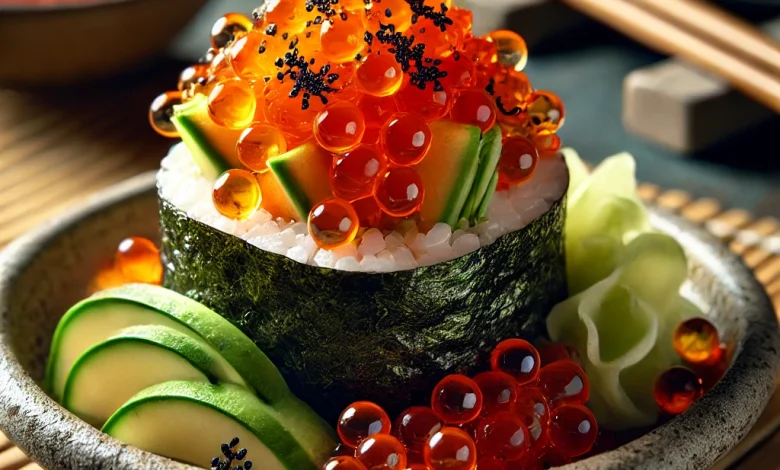
Tobiko Recipe: How to Use and Prepare Flying Fish Roe
Tobiko, or flying fish roe, is a popular ingredient in Japanese cuisine, known for its crunchy texture, vibrant colors, and subtly sweet flavor with a hint of brininess. Tobiko is often used as a topping for sushi, sashimi, or salads. Below is a guide to preparing a simple tobiko recipe and creative ways to use it.
Ingredients
- Tobiko (Flying Fish Roe) – 4 oz (can be found in Japanese or Asian markets)
- Japanese Mayo – 2 tbsp (optional, for mixing or as a topping)
- Soy Sauce – 1 tbsp
- Lemon Juice – 1 tsp (for a citrusy touch)
- Cooked Sushi Rice – 1 cup (for sushi or rice bowls)
- Seaweed (Nori) – Sheets or shredded, as needed
- Avocado – 1 small, diced (optional, for pairing)
- Cucumber – 1 small, julienned
- Sesame Seeds – 1 tsp (optional garnish)
Instructions
- Preparation of Tobiko Mixture
Take the tobiko out of its packaging and transfer it to a small bowl.
Mix the tobiko with a few drops of soy sauce and lemon juice to enhance its flavor. If you prefer a creamy touch, add Japanese mayo and gently stir.
Keep the tobiko refrigerated until you’re ready to use it.

- Sushi Roll with Tobiko
Lay a sheet of nori shiny side down on a bamboo sushi mat.
Spread a thin layer of cooked sushi rice evenly over the nori, leaving about 1 inch at the top edge.
Arrange cucumber and avocado slices horizontally near the bottom edge of the rice.
Roll the nori tightly, using the bamboo mat for guidance.
Spread a thin layer of tobiko over the top of the roll and press gently to adhere.
Slice the roll into bite-sized pieces using a sharp, wet knife.
- Tobiko Rice Bowl
Place cooked sushi rice in a bowl.
Arrange toppings like diced avocado, cucumber, and shredded nori around the rice.
Add a generous spoonful of tobiko in the center.
Sprinkle sesame seeds on top and drizzle soy sauce or a light ponzu dressing for added flavor.
- Tobiko as a Garnish
Use tobiko as a garnish for sashimi platters, adding color and crunch.
Top off dishes like poke bowls, tempura, or even pasta for a unique twist.
- Tobiko Salad
Combine julienned cucumber, diced avocado, and tobiko in a bowl.
Toss lightly with a dressing made of soy sauce, lemon juice, and a touch of sesame oil.
Serve as a refreshing appetizer or side dish.
Tips for Working with Tobiko
- Storage: Tobiko should be kept in the refrigerator and used within a week of opening. For longer storage, it can be frozen for up to three months.
- Color Variations: Tobiko naturally comes in a reddish-orange hue but is often dyed with natural ingredients for variety:
Black: Squid ink
Green: Wasabi
Yellow: Yuzu (citrus)
Red: Beet juice or chili
- Pairing Suggestions: Tobiko pairs well with creamy and mild ingredients like avocado and Japanese mayo, as well as bold flavors like wasabi and soy sauce.
Nutritional Benefits
Tobiko is low in calories and high in protein, omega-3 fatty acids, and essential vitamins such as vitamin B12. However, it is also high in sodium, so it’s best enjoyed in moderation.
Conclusion
Tobiko’s versatility makes it a must-have ingredient for anyone who loves Japanese cuisine or wants to experiment with new flavors and textures. Whether used as a garnish, in sushi, or as part of a rice bowl, tobiko adds a burst of color and crunch to any dish.





